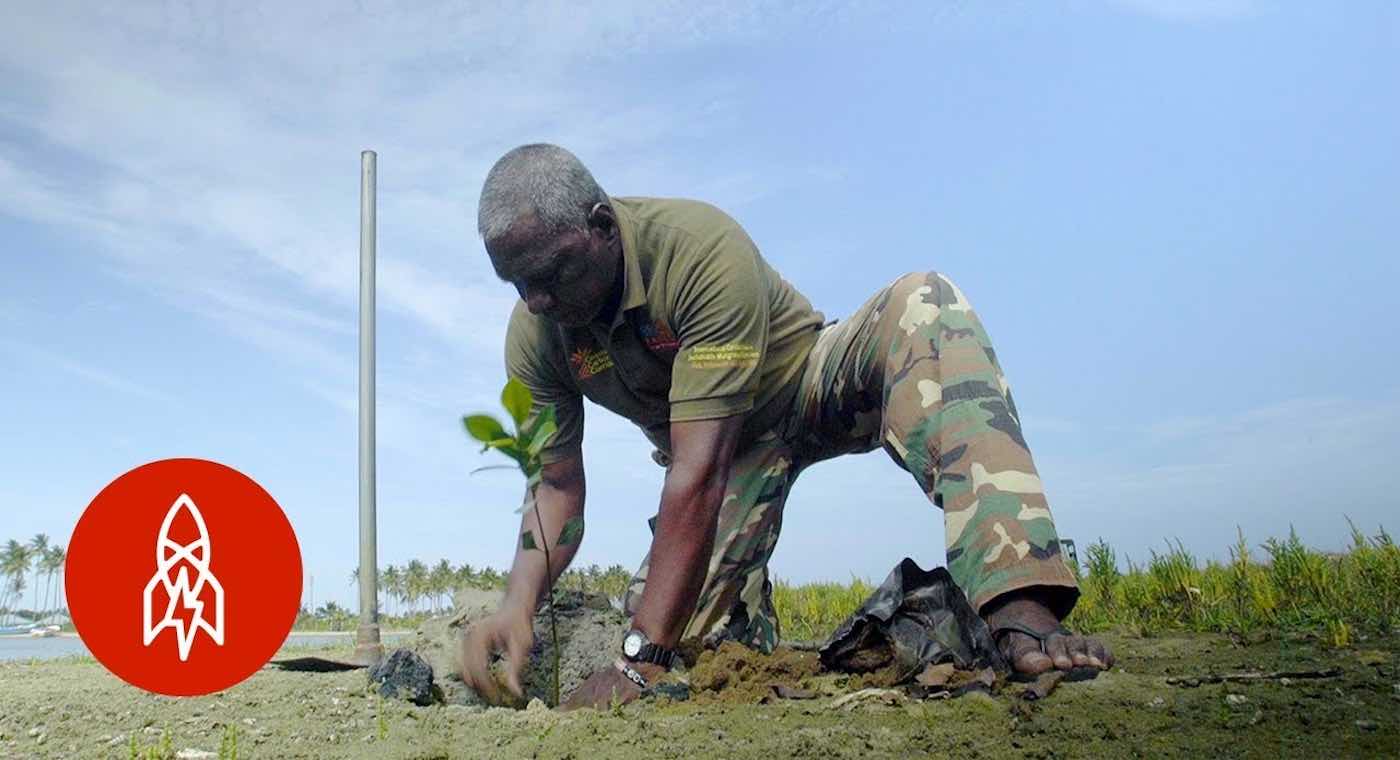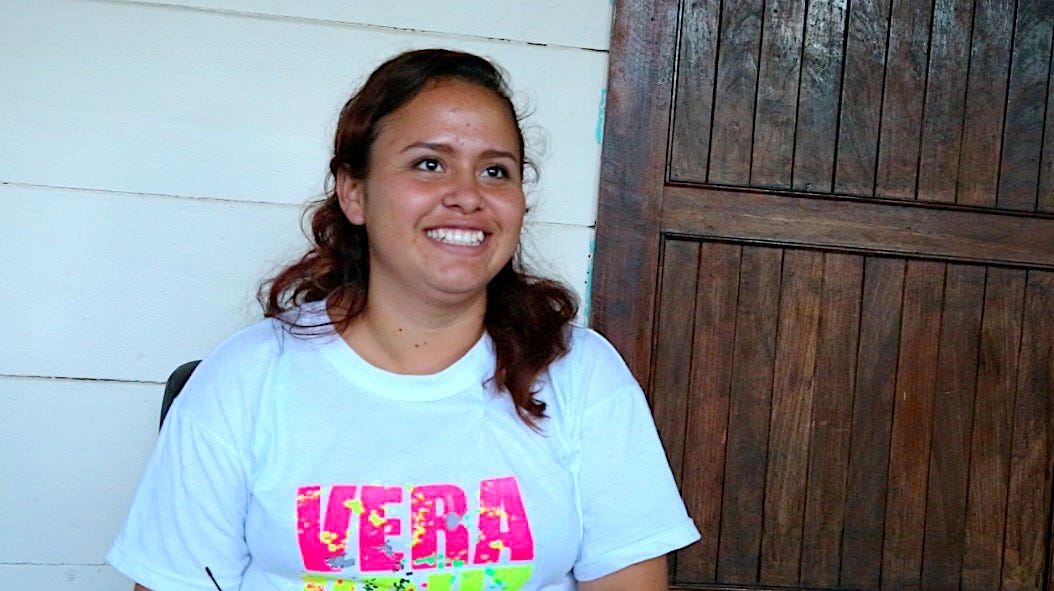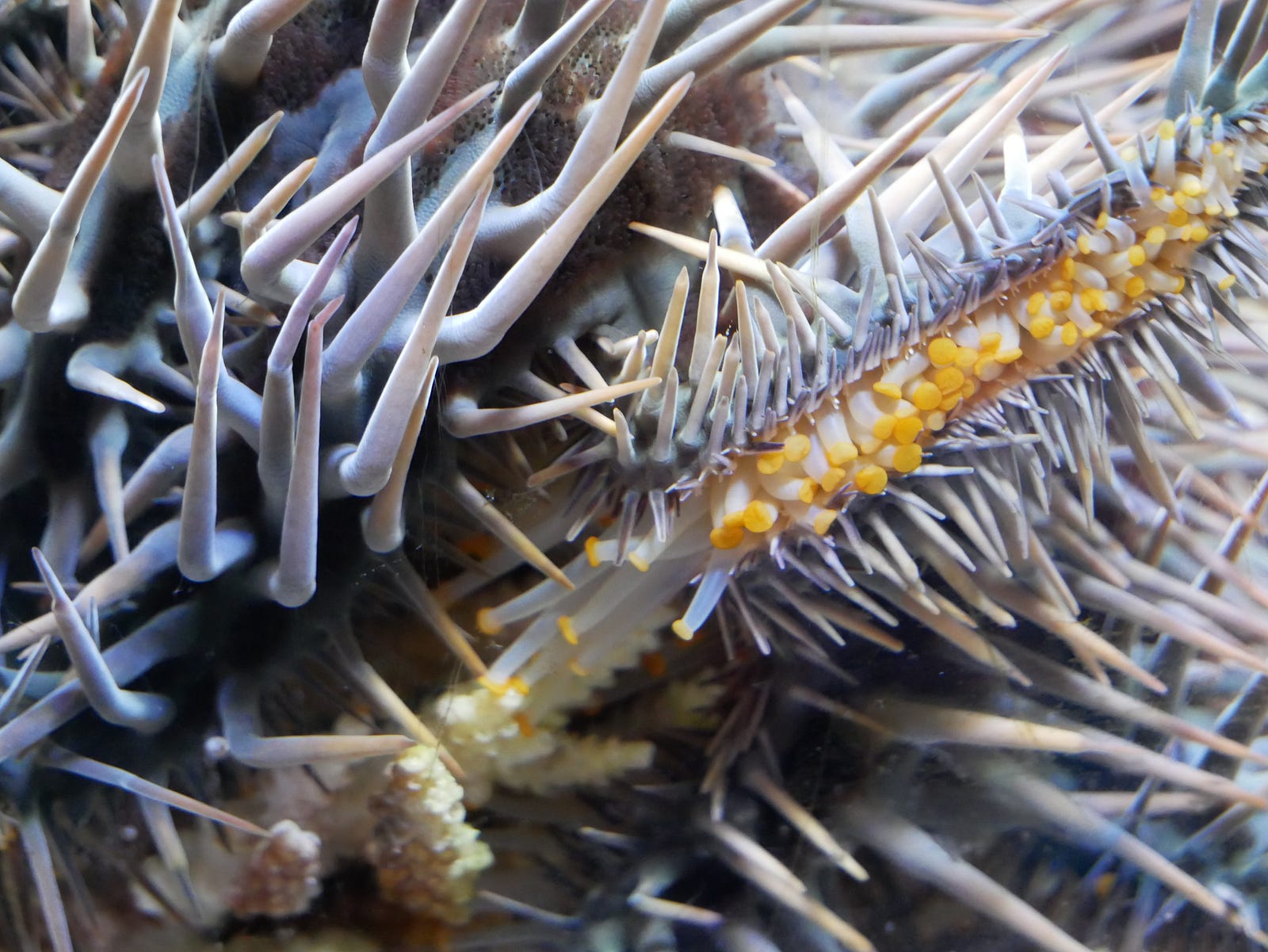From mitigating climate change, to protecting coastlines, food security, bio-diversity, and economic and social equality – mangroves offer important solutions for our planet! 
Over the past 26 years the Mangrove Action Project (MAP) has worked around the globe in giving a voice to mangroves, and in helping to conserve and restore these critical forest wetlands. The world today faces a number of challenges – ranging from climate change, to protecting coastlines from strengthening storms, ensuring food security, and economic and social equality. Luckily, mangroves provide unique solutions to these pressing issues! You may have read or heard recently about a report issued by the world’s leading climate scientists at the UN’s International Panel on Climate Change (IPCC), warning us that urgent changes are needed to reverse the course of climate trends. Nearly 2.4 billion people live within 60 miles of the coast, and as temperatures and sea levels continue to rise these areas will be some of the most heavily impacted. Luckily, mangroves have been found to be incredible long-term carbon sinks, storing carbon in the plants themselves, but also (and more importantly) in the soils below for hundreds and sometimes thousands of years. In the coming months, MAP will be pushing our successful ecology and community-based methods to the forefront of mangrove restoration efforts globally, and will continue engaging current and future generations in these crucial ecosystems. But we can only do so thanks to our amazing network of supporters! During this year-end giving season, we hope you’ll consider a tax-deductible donation to Mangrove Action Project. To make a donation,
please visit our donations webpage.
READ MORE AFRICA
Indigenous peoples and local communities are the best guardians of biodiversity

EGYPT – “Indigenous peoples and local communities embody humanity’s creative intelligence and wisdom in our care and love for Mother Earth. We are on the frontlines to protect the world’s remaining biodiversity, and many of our leaders have been killed defending human rights and the environment.” This was the key closing message of the of the caucus* of indigenous peoples and local communities (IPLCs) participating in the UN Biodiversity conference, held in Sharm El Sheikh, Egypt, 17-29 November 2018. The Biodiversity Conference combined the 14th Meeting of the Conference of the Parties to the Convention on Biological Diversity (COP14), the highest governing body of the Convention, as well as the 9th meeting of the Parties to the Cartagena Protocol on Biosafety (COPMOP9) and the 3rd meeting of the Parties to the Nagoya Protocol on Access and Benefit Sharing (COPMOP3). READ MORE
Joining up the dots to protect Forests, Climate and Rights – A Strategy Think-piece

CONGO – As 80% of global biodiversity lie within the vast forest territories of indigenous peoples, these crises are closely linked.1 The threats to the successful conservation of forests, the associated impacts on our global climate and the cultural survival of indigenous peoples who call those forests home have their roots in the same problem: a failure to legally recognise and enforce the rights of indigenous peoples to care for their ancestral forest lands, thereby securing their lands and demonstrating sustainability is possible. FPP works at the nexus of these problems mobilising a diverse set of tools to tackle these linked crises. FPP’s approach is rooted in deep working relationships with indigenous peoples, connecting their struggles with national and global allies in the spheres of conservation, human rights, development and trade, and using tools such as strategic litigation, and legal and policy reform to reinforce this grass roots advocacy to generate transformative change. READ MORE
ASIA
Protecting our mangroves and coastal wetlands

MALAYSIA – During my recent field trips to various mangrove forests and islands on the west coast of Peninsular Malaysia, there were sightings of plastic litter in the mangroves and on the shores throughout the coast. Accumulated plastic litter can have major negative consequences on mangroves. For instance, they occupy ground space and create unnecessary competition — deterring seedlings to establish and grow, while suffocating and choking the faunal organisms. Plastic litter also affect tidal flushing, causing stress on the ecosystem with increased salinity and chemical deposits. Furthermore, plastic litter could also promote the spread of mosquito- and other pest- and water-related diseases, among others.Many mangrove forests are still perceived as the most convenient dumping sites, while some mangrove estuaries are suppressed by the impacts of leachate and overflow garbage from the nearby illegal landfills. It is crucial to note that coastal villages are directly affected by the daily flood and ebb tides. Critically, during spring tides (new moon and full moon), all low lying villages are flooded and the tides will wash away unmanaged litter when ebbing, and contribute further to the marine debris issue. READ MORE
After Dedicating 16 Years of His Life to Mangroves, Man Has Helped to Plant 2 Million Trees

SRI LANKA – Mangrove trees are an essential source of resources for humans and animals alike – and despite how deforestation has put the trees in a precarious position, one man has dedicated his entire life to protecting them. Douglas Thisera, also known as the “Mangrove Master”, has planted over 2 million mangrove saplings across his home country of Sri Lanka in a bid to preserve the precious foliage. “I love mangrove forests very much,” Thisera told Great Big Story. “I can compare my attachment to mangroves like the connection between a tree and its bark.” Though Thisera has been working in conservation since 1992, he has spent the last 16 years planting the saplings and organizing community projects to protect mangrove forests from being torn down for industrialization purposes.READ MORE
By 2021, mobile app will send alerts if mangroves destroyed

INDIA – Debris mafia and land encroachers may want to think twice before destroying mangroves as the state forest department’s cell is all set to get phone alerts through an app whenever miscreants damage any green cover. The app, to be developed by Indian Institute and Space Science and Technology (IIST)—a unit of Indian Space Research Organisation, will generate alerts even if a minor change is detected in the state’s mangroves cover. Even a 2sqm destruction or degradation of mangroves will be detected with the help of satellites. The IIST commenced work on the satellite-mapping project in April and is expected to complete it by 2021. In the meantime, IIST has already begun sharing satellite images with the mangrove cell. “We are using ground and satellite data to perfect a model for monitoring mangroves. The app, which will be developed in the later stages, will be provided to select officials. It will also receive complaints and mangrove destruction pictures sent by citizens,” said an official. “Past baseline maps and imagery are being used. The satellite will monitor changes and every time a change is detected, if it is negative, an alert will be generated. The project will cost us Rs 70 lakh,” said the official. READ MORE
Indigenous peoples in West Papua call for halt of harmful ‘development activities’ on their customary lands

INDONESIA – “Currently, we, the indigenous people, traditional villagers and forest people, and the places where we are living are under pressure and face sustained injustice and social tension due to large-scale “development’ activities conducted by plantation and commercial logging companies.” After travelling to Jakarta to meet with religious leaders, and representatives from the environmental and forest ministry, the affected communities from West Papua took part in a demonstration. At present, indigenous communities, villages and customary forests in Papua are experiencing pressure, injustice and social tensions from development activities carried out by large scale plantation companies and commercial logging. READ MORE
AMERICAS
Experts Seek to Conserve and Restore Mangroves in the Country

COSTA RICA – The International Workshop for Exchange of Experiences in Mangrove Conservation and Restoration was held in the country for the framework of the Project Restoration, Conservation and Sustainable Management of the Mangroves of Costa Rica, Benin Against Climate Change, and the Costa Rica-Benin Mangrove Project. This was the 4th workshop to be held in Costa Rica this year since previously the national experiences have been known and from countries such as Colombia, Panama, and Ecuador. The workshop allowed the exchange of knowledge and experiences related to conservation, mangrove restoration, models of community participation and environmental education related to these ecosystems, which will include the participation of national and international experts, government institutions, civic organizations, and community groups. In addition, it allows the monitoring of the results of the national initiatives previously identified by the project Global Environment Facility (GEF) mangroves and the coordination of the National System of Conservation Areas (SINAC), to work towards the goal of establishing a protocol national for the rehabilitation of mangroves.READ MORE
Finding A Future in the Forest

MEXICO -One of the largest remaining tropical rainforests in the Americas stretches across the Mexican states of Yucatan, Quintana Roo and Campeche, and reaches down into Guatemala and Belize. The forests are home to an innumerable number of species, from jaguars and mahogany trees, to plants, insects and animals still yet to be named and classified by modern science. In some places, the landscape is dotted with cenotes, caves hollowed out from limestone, that fill with dazzlingly aqua waters. People living in this region have been stewards of the forest for generations. But when she was younger, Alma Delia Salgado didn’t think she could stay in her small hometown, Nueva Vida, in the state of Campeche. She planned to move away to find work, perhaps to a big city or maybe the United States. This is a common dilemma facing young people around the world, who find few opportunities in rural regions. But for the forest communities of the Yucatan Peninsula, the departure of an entire generation could spell disaster for an ecosystem — and global climate change. READ MORE
OCEANA
Can Killer Robots Help Save the Great Barrier Reef?

AUSTRALIA – I spot one on a clear September morning, while swimming through the lukewarm waters around the Great Barrier Reef. A striking starfish, the color of cabernet and sporting more than a dozen arms, hugs the side of a gently curving ridge of coral. It looks lovely and dangerous, and not just because I know the long spines covering it are lacquered with venom. This creature, located a two-hour boat ride from Townsville, off Australia’s northeast coast, is known as the crown-of-thorns starfish. While it’s the first one I have ever seen, it’s far from alone. Since 2010, a plague of them, numbering somewhere in the millions, has been methodically consuming the Great Barrier Reef, representing yet another in a series of existential threats to a coral reef system already wounded by intense hurricanes and weakened by bouts of exceptionally warm waters. Nor is this the first outbreak. READ MORE
LAST WORD
BECCS and many fake “sustainable biofuel” projects continue to misinform about their net impacts using false carbon accounting.
Some examples are given in this New York Times article, which unfortunately fails to discuss solutions:
Palm Oil Borneo Climate Catastrophe
Last year, when the deforested peatlands cleared for oil palm burned in forest fires, Indonesia was briefly the world’s largest CO2 emitter, even more than China or the US!
Indonesia has the world’s largest mangroves, and around half of them have been destroyed.
Most have been destroyed with international “development” funds, in order to create shrimp ponds, around half of which have been abandoned due to disease.
Indonesia now protects mangroves, but the north coast of Java, which used to be mangroves, are now water, causing flooding inland due to sea level rise.
If they were regenerated, Indonesia could be the world’s largest and most cost-effective carbon sink.
The Biorock method, originally developed for coral reef and coastal fisheries regeneration, greatly increases marine plant above and below ground production, and increases carbon storage in sediments.
Willie Smits, Biorock Indonesia, the Mangrove Action Project, and Indonesian mangrove researchers are trying to find funding to use Biorock restoration methods to restore Borneo mangroves that were illegally clearcut for palm oil plantations, whose peat carbon is now oxidizing and turning into CO2 as the result of deforestation and drainage.
Our goal is to turn this devastated area into an orangutan sanctuary, a carbon sink, and a producer of truly sustainable biofuels.
These will be produced from sustainable tapping of the flower stalks of Nypa fruticans palm, endemic to these swamps, which unlike sugar cane, does not need to be cut down or fertilized to produce biofuels.
Thomas J. F. Goreau, PhD
President, Global Coral Reef Alliance
President, Biorock Technology Inc.
Coordinator, Soil Carbon Alliance
Coordinator, United Nations Commission on Sustainable Development Small Island Developing States Partnership in New Sustainable Technologies
37 Pleasant Street, Cambridge, MA 02139
goreau@globalcoral.org
www.globalcoral.org
Skype: tomgoreau
Tel: (1) 617-864-4226



























